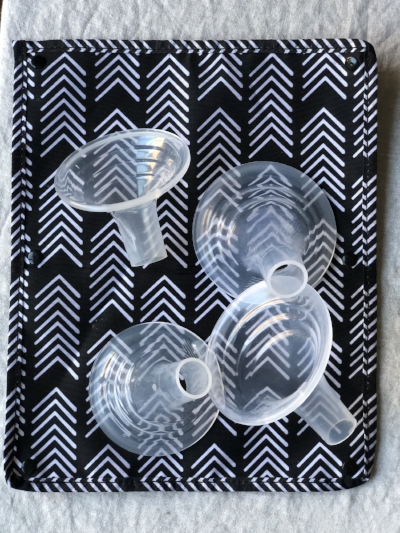Exclusive Pumping - How Does it Change Over Time?
Written by Amanda Glenn, from HTTPS://EXCLUSIVEPUMPING.COM/
When exclusively pumping, does the pumping regimen change over time or stay the same?
When you start exclusively pumping, most lactation consultants recommend that you pump the same number of times that your baby eats, which is about 8-12 times per day. Usually, each session is about 15 minutes.
Whether or not this changes as your baby gets older is completely up to you! There is no harm is keeping this schedule up as long as you continue to exclusively pump. However, most exclusive pumpers find pumping so often to be pretty exhausting and start to drop pumping sessions around the 6-8 week mark. (Here are some sample pumping schedules by age.)
When you drop pumping sessions, what you're really doing is consolidating your pumping time - you're pumping for the same amount of time per day, but just less often. So, for example, if you are pumping 8 times a day for 15 minutes, and you want to drop down to 7 times a day, you would add about 2 minutes to each of your 7 remaining sessions.
(Why drop pumping sessions if you're still going to have to pump for the same amount of time each day? It helps you avoid the hassle of stopping what you're doing, getting hooked up to the pump, and putting your breast milk away and washing your pump parts.)
Increasing the length of your sessions will help you maintain your supply; you'll pump less often, but get more milk at each session because you'll get multiple letdowns of milk.
Middle of the Night Pumping Sessions
The other thing that changes with regard to exclusive pumping schedule over time is overnight pumping. When your baby stops waking up in the middle of the night to eat, many women drop their middle of the night pumping sessions as well.
This makes sense, as your pumping schedule should mimic your baby's feeding schedule (and also because you need to sleep). However, some women do decide to keep a middle of the night session if milk supply is an issue for them, because prolactin levels can be higher at night.
Managing Pumping with an Older Baby
Another thing that can change your pumping regiment as your baby gets older is how you manage to get your pumping sessions in. When your baby is a newborn, you may have family members or your partner home with you at times to help hold the baby when you need to pump, or you may be able to feed your baby a bottle while you pump with a hands-free pumping bra.
Older babies like to play with tubing and are mobile, so being tied to a pump can sometimes be more challenging. Luckily, their sleeping habits tend to be more predictable, so it's easier to schedule your pumping sessions for times when they are napping. (When this doesn't work, sitting next to baby in a high chair with some finger foods and/or toys is my best strategy for dealing with this.)
Going Back to Work
Another thing that might affect your pumping regiment over time is going back to work. In the United States, many new moms have to go back to work when their babies are 12 weeks old. The good news is that exclusively pumping moms are a bit ahead of the game - if you're an exclusive pumper, you are already very familiar with a breast pump, and you know your baby will take a bottle.
However, you do need to figure out how to fit your pumping sessions in with work. Women with office jobs may have an easier time with this, especially if they can work on a laptop with a hands-free pumping bra. If pumping at work for you is easy, it might make sense to do more pumping sessions at work so that you can spend the time that you do have at home with your baby.
Other moms, like teachers, have a harder time getting breaks from work to pump. If this is true for you, you might have to be creative with your pumping schedule in order to get your pumping sessions in, maybe by concentrating your pumping sessions at home before your baby gets up and after he goes to bed.

